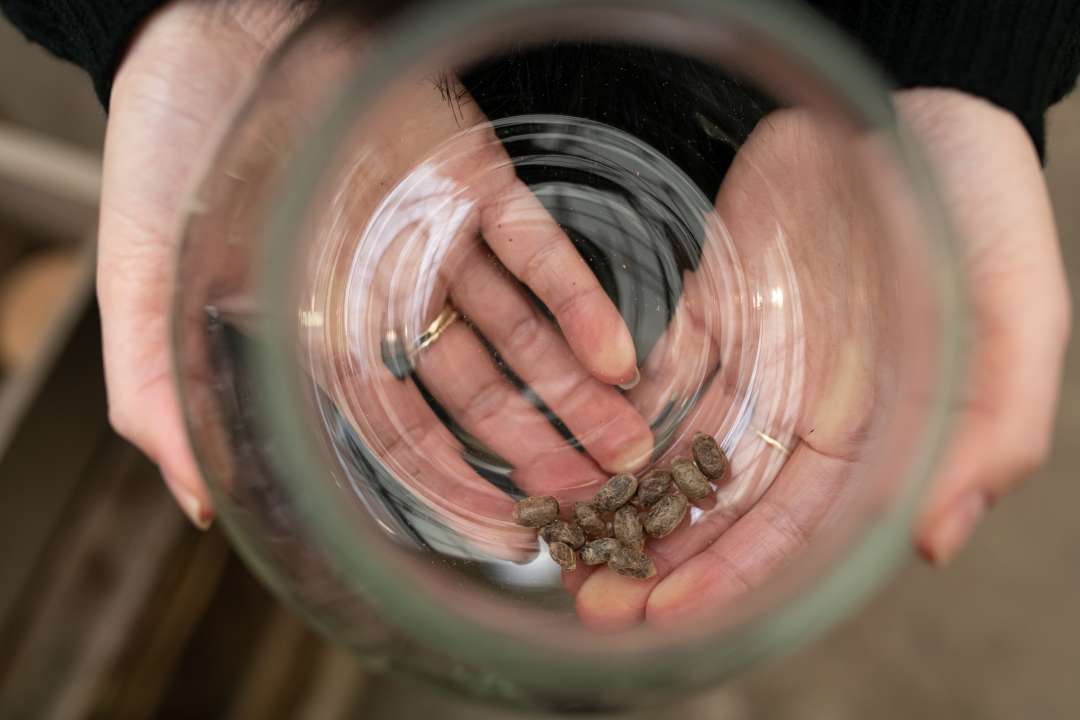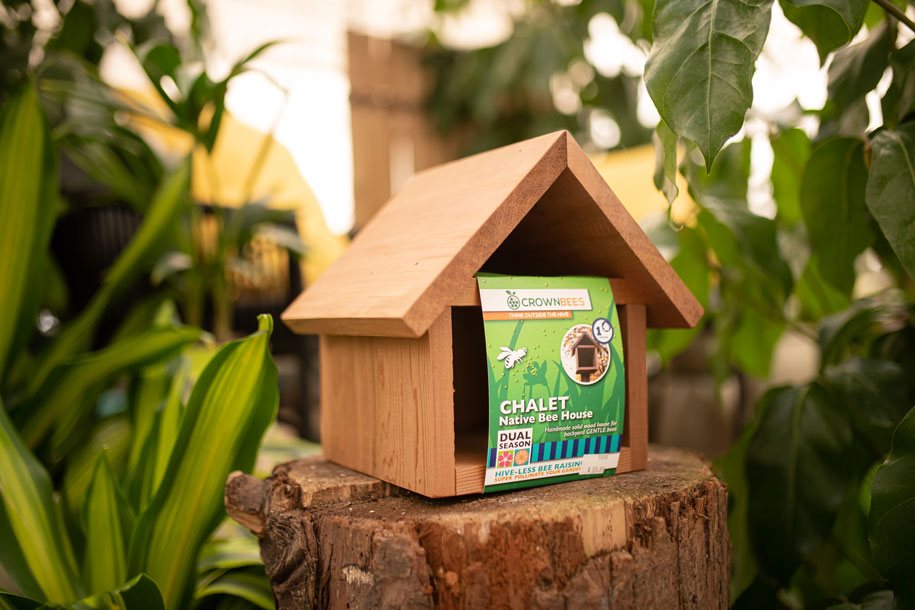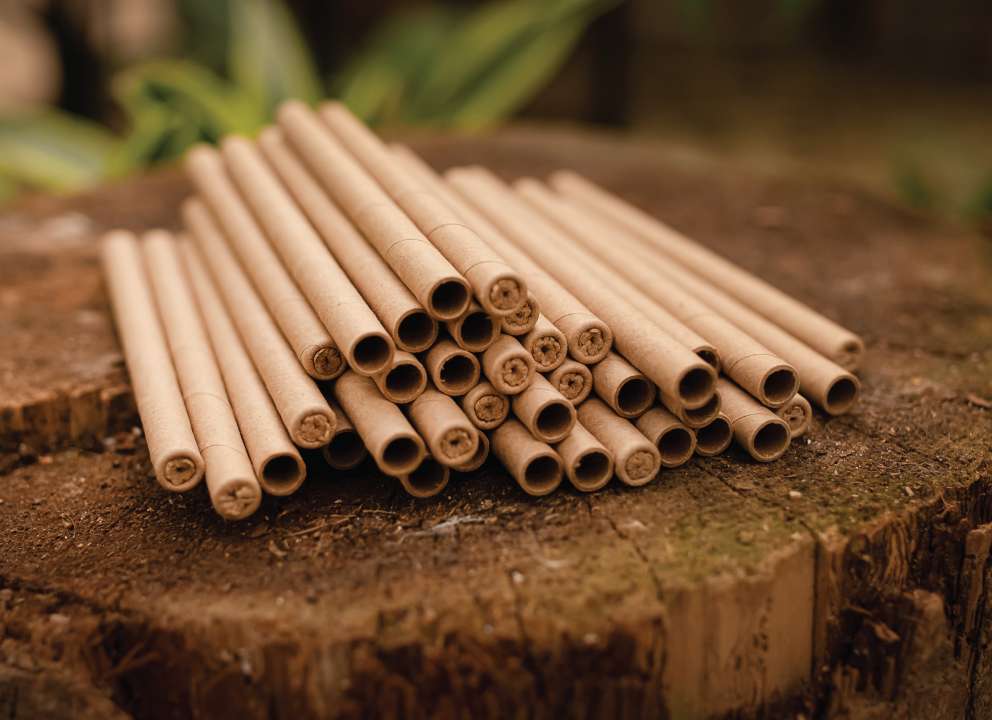Seasonal Supplies
Blue Orchard Mason Bees
Blue orchard mason bees (Osmia lignaria) are a native species to the West Coast of Canada and the United States. They are best known for the pollination services they provide to fruit crops in the early to mid-spring. Mason bees are a solitary bee, meaning they don’t swarm or work together to build large communal nests. Each individual bee lays its eggs in holes in wood or mason and it partitions each egg off with its own supply of pollen by placing a layer of mud between each egg that it lays (This is where they get their name). The eggs hatch and feed off the supply of pollen and nectar in which it was placed. Mason bees tend to make their homes in wooden buildings and structures. They are not destructive and do not create holes in these structures, but rather look for existing openings like knots and nail holes for their nests.

Best Pollinators For Our Region
Bees love fruit trees especially apple, cherry and plum, though berries, Oregon grape, and many other early flowering ornamentals are pollinated as early as February. Mason bees forage earlier in the morning and later in the afternoon, and are present in gardens at lower temperatures than their cousins the honeybees. They are also more efficient at pollinating than honeybees: it only takes 250-300 female bees to pollinate an acre of apple trees.
Appearance
Blue orchard mason bees are smaller than the honeybee and have a fuzzy blue appearance. The female is larger than the male and will lay 2-3 eggs a day during the 6-8 weeks that she is active. She is solely responsible for making her nest and providing food supply for the eggs she deposits in her nests. An interesting fact to marvel at is that the eggs deposited in the nest first are ALWAYS female and the males are deposited on the outer part of the nest. The reason being is that the males emerge first to be prepared to mate with the emerging females, before the females carry on to start making a new nest.
NOTE: Mason bees like to be near a natural source of water as they will gather mud to form their nest.
Types of Homes
One way to create a nest for mason bees is to place a bunch/group of paper tubes in a tin can attached to a suitable surface in a covered place.
Alternatively, houses are available that contain openable blocks with predrilled openings are placed in decorative wooden homes for the bees to use as a nest. These can be opened in the fall season to remove and clean the pupating bees and kept in a safe, cool place for the winter. (Fridge or humidity cooler)
Alternatively, houses are available containing blocks with predrilled openings that are placed in a decorative wooden home. In the fall, these can be opened for cleaning and removing the pupating bees for safe keeping during the winter (see below).

Mason Bee Tubes
Mason Bee Nesting Tubes are cardboard nesting tubes are attractive to mason bees and are an inexpensive way of getting started. The 35 tubes are closed at one end to provide the ideal mason bee nesting conditions. When it's time to clean the cocoons, the tubes are moistened and gently peeled apart.

